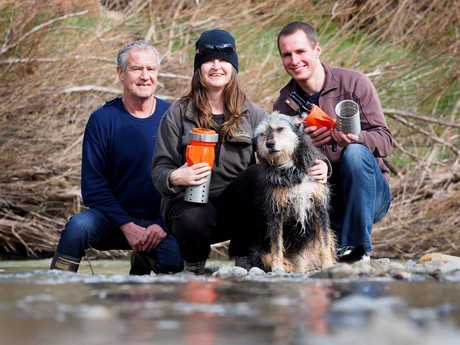Winners announced for WWF-New Zealand 2017 Conservation Innovation Awards

Every year, WWF-New Zealand seeks out game-changing ideas that will change the face of conservation as part of its Conservation Innovation Awards. The winners of the 2017 awards were announced last week, with three innovative ideas eventually selected out of a record-breaking 47 entries and 35 finalists.
WWF-New Zealand CEO Livia Esterhazy said the organisation was “thrilled to announce our amazing 2017 winners”, each of which offers a big, bold idea offering new solutions to some of New Zealand’s greatest environmental challenges. As part of their prize, each winning team was awarded a $25,000 grant to fast-track their idea from concept to development to maximise impact for conservation, making a real difference in the fight to protect precious ecosystems and native species.
The first winning idea announced was the Thermal Animal Detection System (TADS) — a military-grade thermal imaging system that uses a helicopter to quickly cover difficult terrain and large forested areas and has the ability to detect 90–100% of a target invasive pest population (eg, goats, deer and pigs). The judging panel was very impressed by TADS, saying it has huge potential to reduce costs, improve the effectiveness of managing ungulates in conservation reserves and offshore islands, and monitor endangered native species.
The Grid-i Pest Detective, developed by electronic design enthusiast Gerald Dickinson, meanwhile combines thermal imaging and AI software to identify and monitor specific invasive mammal pests like rats and possums. The judging panel was excited by the technology’s ability to move away from current indiscriminate pest removal methods and target specific species more accurately, in a move considered widely beneficial for conservation operations working towards a Predator Free New Zealand 2050.
Finally, Water Action Initiative New Zealand (WAI NZ) is developing a waterborne E. coli contamination sensor that can give community members and regional councils a tool to monitor freshwater in real time, providing immediate detection of increased E. coli levels so that swift action, including early health warnings, can be taken. The judging panel believes the sensor will revolutionise how fresh water can be tested with wider benefits for ecosystem health.
“Up until now, testing for waterborne E. coli has been time-consuming and often ineffectual, with results taking up to 48 hours to incubate in a laboratory,” said James Muir, who co-founded WAI NZ with his father Grant. “Our purpose-built design is a crossover of straight biology with cutting-edge innovative technology and the results are instant.”
According to Muir, the award establishes a pathway to refining, developing and manufacturing the E. coli sensor with WAI NZ’s collaborative partner, ESR (the Institute of Environmental Science and Research. WAI NZ is now welcoming additional partners and investors to become part of the team to take this idea through to development and commercialisation, Muir said.
Merger strengthens RSK Australia's regional services
Projence and Western Project Services have merged under the Projence brand, to improve the...
Reaching net zero in the manufacturing sector
Sustainable solutions such as 'green concrete' and carbon tracking were presented at the...
Reducing upfront carbon in built environment: report
ASBEC has released a report aiming to reinforce and amplify government and industry efforts...










